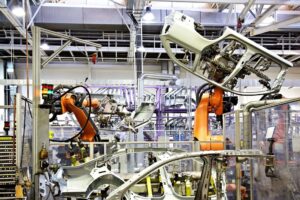Supply chain disruptions have become the norm in today’s rapidly changing manufacturing world. Due to global conflicts, geopolitical tensions, rising raw material costs, labor shortages and extreme weather events, manufacturers face constant pressure to remain agile, efficient and responsive.
With rising costs impacting day-to-day business, small & medium manufacturers cannot afford to be bogged down by supply chain disruptions. Therefore, building a robust supply chain resilience isn’t just a necessity – it’s a survival strategy.
One of the most effective tools to achieve this? A modern, integrated ERP system.
Why Supply Chain Resilience Matters More Than Ever?
Manufacturers with resilient supply chains can adapt quickly, recover faster and continue production and delivery even during disruptions. Without it, they risk –
- Missed/delayed delivery deadlines
- Product quality issues
- High operational and overhead costs
- Poor customer satisfaction
- Lost business opportunities
That’s where Enterprise Resource Planning (ERP) systems come in—connecting data, people, and workflows to provide a stronger foundation for agility and risk management.
How does ERP help you build Supply Chain Resilience?
Real-time, Comprehensive Visibility
Modern ERP systems provide real-time data visibility across procurement, inventory, production, finance and distribution, etc.
With real-time data, you can
- Track and analyse raw material movement, in-stock levels, consumption, supplier performance and shipping delays.
- Take proactive decisions and preventive actions before an impending disruption.
Smarter Demand Forecasting
To prevent inventory stockouts or excess inventory, it’s critical to accurately forecast customer demand and accordingly place material purchase orders.
With an ERP, you can analyse market trends, historical data and sales patterns to predict future demand to align material procurement with production schedules, reduce emergency procurement, and avoid stockouts/excess inventory.
Automated Procurement & Replenishment
An ERP allows you to automate purchase orders based on minimum stock levels, production lead times or projected demand. You can,
- Maintain safety stock for critical components.
- Speed up response time when material shortages occur.
- Eliminate manual errors and inefficiencies.
Strengthen Supplier Relationships
With an ERP, you can store detailed supplier data such as contracts, material quality, order history, performance history, lead times, etc., that allows you to,
- Evaluate supplier reliability and performance.
- Shift orders to alternate vendors when needed.
- Share demand forecast data and existing inventory data with suppliers.
- Build stronger, more transparent supplier collaborations.
Inventory Optimization Across Locations
Whether you manage a single or multiple warehouse locations, an ERP ensures,
- Real-time visibility into your inventory across all locations.
- Quicker, smarter stock movement, storage and reduced duplication.
- Efficient, cost-effective use of space and resources.
Scenario Planning & What-If Analysis
An ERP’s built-in simulation tools enable you to test different disruption scenarios, such as,
- What if a supplier shuts down inadvertently?
- What if demand spikes unexpectedly?
- How would supply chain disruptions and production delays impact delivery schedules?
By running simulations for each problem statement, you can plan better and stay rest assured to tackle the emergencies.
An ERP alone won’t get you there!
An ERP will help you build supply chain resilience to a large extent. However, there are other steps that you need to undertake to fortify your supply chain completely.
Diversify Your Supplier Base
Complete reliance on a single supplier or suppliers from a single region for key materials or components opens up significant risk for your business. Diversification is the key, and you have to build a supplier base consisting of multiple suppliers from different regions, geographies. Building key relationships with local and secondary suppliers enhances flexibility especially in times of disruption.
Utilize Data
Making use of real-time data lets you keep ahead of your competition. Enhanced data visibility allows quicker decision making and agile responses to constant changes in supply or demand.
Make use of ERP-led supply chain dashboards and reporting tools to improve decision-making. Get auto-alerts for inventory shortages and supply delays.
Build Strategic Stock Buffers
Completely relying on just-in-time inventory can be risky. You can hold safety stock or work with suppliers who can quickly replenish critical materials.
Assess and Manage Risk Continuously
Supply chain risk management isn’t a one-time activity. You will have to conduct regular risk assessments and scenario planning to stay on top of it.
What happens if your go-to supplier goes offline for a few days? Who are your backup suppliers? What’s your contingency plan?
Tools like risk heat maps, supplier scorecards, and ERP-driven reports can help you stay ahead.
Embrace Local and Nearshore Sourcing
Global sourcing comes with its own advantages, but also with longer lead times and greater disruption risk. Having local and in-grown suppliers helps reduce lead times, chances of disruption, and increases reliability. It also encourages local businesses to innovate and stay ahead of their global competitors.
Conclusion
Resilient manufacturers are data-driven, agile and always prepared for the unexpected. With a powerful, modern ERP like OmegaCube ERP, you are not just reacting to disruptions – you are anticipating them well in advance and staying ahead of them.
Want to see how OmegaCube ERP can make your supply chain disruption-proof?
Request a demo or contact us today to learn how OmegaCube ERP can help you build lasting supply chain resilience for your enterprise.






5 Responses
Just exploring your services
Non ut quae sit expedita adipisicing minima amet facilis possimus et quae nihil
Omnis deserunt ullam exercitationem temporibus
Voluptas quam Nam quis omnis eveniet voluptatem Doloribus dolore doloremque facilis voluptatem Quis veniam labore accusamus et
Corporis dolorem exercitationem quia neque obcaecati quo sed autem dolor